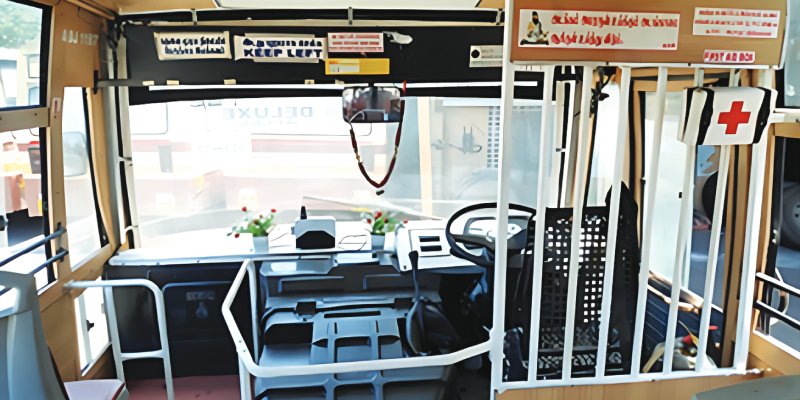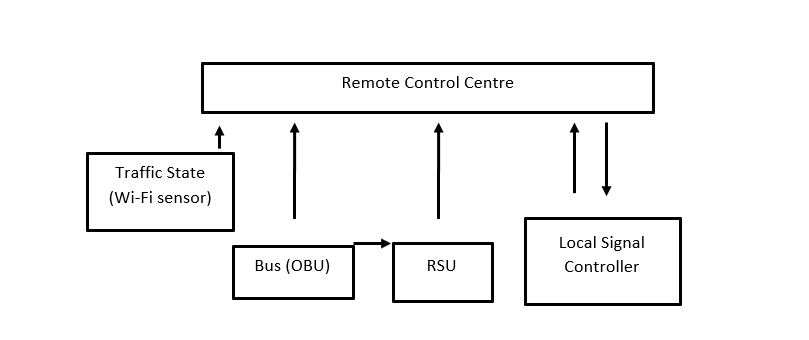Bus priority at signalized intersection

Dr. Lelitha Devi Vanajakshi, MoRTH Chair Professor – Transportation Engineering Division, Department of Civil Engineering, Indian Institute of Technology, Madras
The recent rise in vehicle ownership without a corresponding rise in infrastructure has resulted in long delays and congestion have become a problem all over the world. An inefficient urban transportation system increases energy consumption, travel time, travel costs, traffic congestion and air pollution. Therefore, it is necessary to develop and manage transportation systems more effectively through better utilization of the current infrastructure, states Dr. Lelitha Devi Vanajakshi, MoRTH Chair Professor – Transportation Engineering Division, Department of Civil Engineering, Indian Institute of Technology, Madras.
For a fast- growing economy like India, traffic congestion is one of the biggest challenges. The methods to reduce congestion can be an intervention that requires low capital investment such as demand management measures or an infrastructure expansion that requires public and/or private sector investment. However, these solutions can only provide a temporary relief until the induced demand fills up the road space again. One of the most effective solutions to reduce congestion is to promote public transport because of its high occupancy compared to personal vehicles. As a result, the relevance of public transportation as a medium capable of providing sustainable mobility has grown.
Out of the various measures for improving the public transportation performance, bus priority at signalized intersection has the potential to reduce delays and queues at signals thereby reducing bus travel times in urban arterials. Bus signal priority (BSP) system is an operational strategy that modifies normal traffic signal operations to better accommodate in-service public transport buses at signalised intersections. Such BSP strategies have not been practiced or documented anywhere in India, may be due to non-availability of reliable data sources and communication from public transport buses. The existing solutions that were developed and tested for the lane based homogeneous traffic cannot perform well for the traffic conditions in India, which is a heterogeneous mix moving without any lane discipline.

 Unlike a blind priority that is given for emergency vehicles, BSP can be a conditional priority. One such solution is developed by transportation researchers from IIT Madras with funding from the Ministry of Electronics and Information Technology (MeitY), Government of India, which gives priority to buses only when there is an overall reduction in total person delay, considering all vehicles. The developed system will minimize total person delay by providing priority to public transport buses, either through Green extension (GE) or Red truncation (RT), considering all vehicles approaching a signalized intersection.
Unlike a blind priority that is given for emergency vehicles, BSP can be a conditional priority. One such solution is developed by transportation researchers from IIT Madras with funding from the Ministry of Electronics and Information Technology (MeitY), Government of India, which gives priority to buses only when there is an overall reduction in total person delay, considering all vehicles. The developed system will minimize total person delay by providing priority to public transport buses, either through Green extension (GE) or Red truncation (RT), considering all vehicles approaching a signalized intersection.
The data requirement of the available BSP solutions is high and are computationally intense. The bus priority algorithm developed by IIT Madras uses sampled Wi-Fi data, making it less data intensive. Moreover, the current study develops analytical expressions, which are computationally light for real time implementation. The system architecture consists of four components: the remote traffic control centre, where the priority decision is taken, the bus that needs priority, the devices for collecting and communicating the data, and the local signal controller, through which the final signal timings are displayed. Figure below shows a schematic diagram of the bus priority architecture.
The buses transmit the GPS position and timestamp to the remote control centre via wireless General Packet Radio Service at a frequency of 1 second. When the bus reaches the vicinity of intersection (say at a distance of 500 m from the intersection), the On-Broad Unit (OBU) in bus communicates with the Road Side Unit (RSU) at intersection and the RSU will then update the bus position to the remote control centre. In addition, current travel times in the signal approaches are obtained using Wi-Fi sensors as and when a vehicle with an active Wi-Fi device crosses the scanners placed in the approaches. The queue length in each approach is calculated from this data, based on traffic flow theory concepts and the signal state is directly obtained from the signal control.

Using these information, the bus arrival time at the traffic signal is predicted and chances of bus priority are evaluated in the remote control centre. Total person delay with priority is compared with that before priority and only if there is a reduction in total person delay can be achieved, priority is given. In that case, the revised signal timing is communicated to the local signal controller. This communication will occur only at a buffer time before the actual change to occur in the display.
Considering the high data frequency requirement near the signal area, Dedicated Short Range Communication (DSRC) is utilized to guarantee reliable, low latency communication. DSRC is a short-range communication standard that operates in the 5.9 GHz band, designed by CDAC Trivandrum, to support safety critical applications and other ITS applications for on road vehicles. The DSRC system comprises of two types of devices namely, the on-board unit (OBU), installed in buses and road side unit (RSU), installed on road side poles near the roadway. For these to be used for the bus priority system, embedded application was developed for collecting and storing data from the sensors of OBU.
The OBU consist of GPS, accelerometer and gyroscope, and the data will be used for communicating bus arrival information at signalized intersections via RSU (V2I). Application for data transfer between RSU to server (with public IP) was also developed based on socket communication through internet. An elemental architecture diagram of Bus Priority System (BPRS) using DSRC devices is depicted in Figure below. For the traffic data collection, the less infrastructure intensive Wi-Fi sensors are developed indigeneously at IIT Madras and utilised for the solution. For signal information, direct information from the signal controller can be utilised.
Thus, the 3 key inputs for the system include:
- Bus arrival information: captured using DSRC devices
- Traffic state information: realized through probe vehicles using Wi-Fi scanners
- Real time signal information: obtained from traffic controller

Based on the bus and signal data and the computed traffic flow and queue length using Wi-Fi sensor data, the arrival time of buses at the stop bar is predicted and new signal timings are calculated in each cycle. The sensors used are indigenously developed and customized to meet the bus priority application specifications. The present model considers total person delay of all vehicles that arrive at an intersection in a signal cycle. The delay functions were multiplied by a weighting factor, which is the vehicle occupancy in this case.
As buses have the highest occupancy, the weighing factor will prioritize buses over other vehicles in the signalized intersection. The base signal system is developed based on vehicle delay minimization at the intersection. The developed bus priority algorithm is computationally light making it scalable. Thus, this solution, aimed to promote public transport by reducing total person delay at signalized intersections, is a step towards the development of sustainable transportation solutions.
 TrafficInfraTech Magazine Linking People Places & Progress
TrafficInfraTech Magazine Linking People Places & Progress